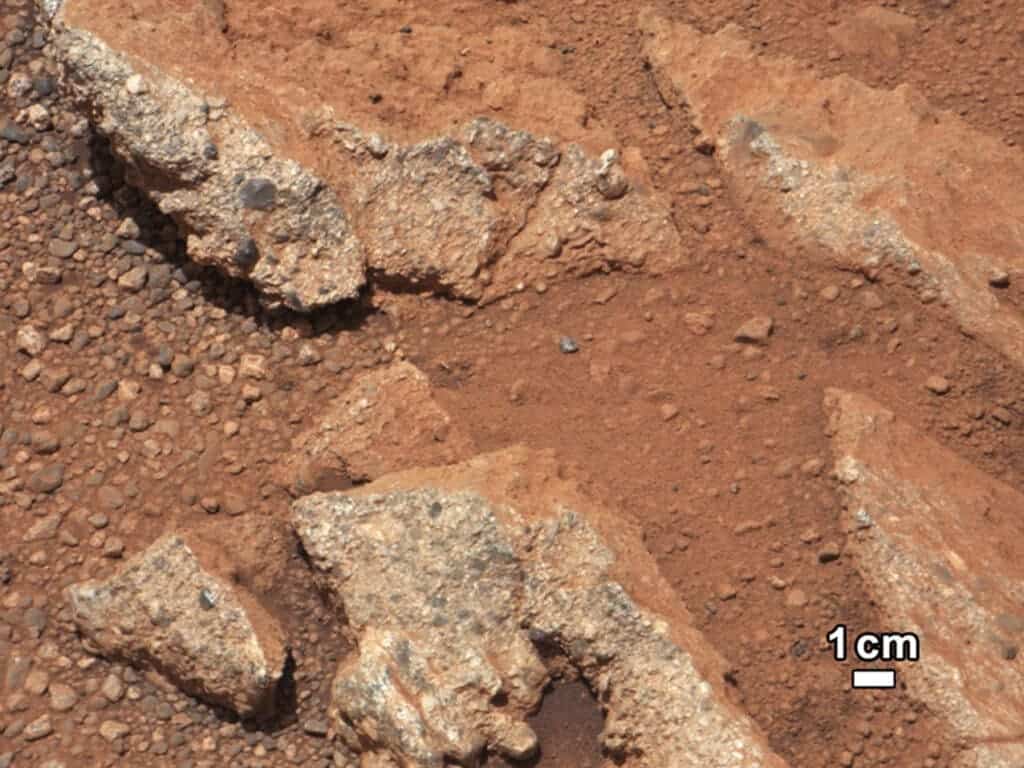Our understanding of Mars has been a true rollercoaster. Centuries ago, scholars thought Mars could host rivers and oceans like on Earth and maybe teeming with life. When the first observations came in from Galileo Galilei in 1610, astronomers discovered a planet with polar ice caps that was seemingly similar to Earth, so the hypothesis seemed to stand. But as we learned increasingly more, it became apparent that Mars isn’t exactly a lush planet.
Mars is barren nowadays, and while it may have been water-rich at some point in the past, that’s not really the case now. But there’s one more twist to the story: Mars really does have ice caps, and it does have some liquid water. Granted, that water is full of salts and buried beneath the surface, but it’s still liquid water.
According to a new study, this brine can be used to produce breathable air and fuel for Martian colonists — two valuable resources we would absolutely need on the Red Planet.

The rovers we’ve sent to Mars don’t really need oxygen. They do just fine in the ultra-thin atmosphere of the planet, wandering around and doing experiments in freezing temperatures. But if we want to establish a colony (or more likely, a research base), we can’t really manage without oxygen.
In 2008, NASA’s Phoenix Mars Lander came with some good news in that regard. It “tasted” the Martian water and upon analyzing it, found out how it manages to stay liquid on the freezing temperatures of Mars.
The key is something called perchlorate, a chemical compound containing chlorine and oxygen. Perchlorate is very stable in water, and its salts are very solluble — up to the point where they absorb and collect water vapor over time. As the perchlorate absorbs more water, it also dissolves into the water, substantially lowering its freezing temperature — this is how the water manages to remain liquid at temperatures way below the normal freezing point of water.
The European Space Agency’s Mars Express has found several such underground ponds of perchlorate brine and now, a new study reports that these pockets of liquid water could be used to produce valuable resources.
Of course, you can’t drink salty water. You also can’t use it for too many things. If you want to apply the electrolysis to break it down into oxygen (for breathing) and hydrogen (for fuel), you’d normally need to remove the salt — a very costly and complicated process in the harsh Martian environment. This is where the research team led by Vijay Ramani from the University of Connecticut comes in.
Typically, electrolysis requires purified water, but Ramani’s research team found a way to apply electrolysis efficiently to extract hydrogen and oxygen out of the brine simultaneously, without needing to also extract the perchlorate.
“Our Martian brine electrolyzer radically changes the logistical calculus of missions to Mars and beyond” said Ramani. “This technology is equally useful on Earth where it opens up the oceans as a viable oxygen and fuel source”

They built a modular electrolysis system and tested it at -33 Fahrenheit (-36 Celsius), showing that it really does work. The fact that it’s modular means you can start a small operation on Mars (say, a small research base) and then build on it. Ironically, they were also able to use the salt in their favor.
“Paradoxically, the dissolved perchlorate in the water, so-called impurities, actually help in an environment like that of Mars,” said Shrihari Sankarasubramanian, a research scientist in Ramani’s group and joint first author of the paper.
“They prevent the water from freezing,” he said, “and also improve the performance of the electrolyzer system by lowering the electrical resistance.”
The results are so promising, researchers say, that they’re even considering using a similar technology here on Earth. For instance, submarines or deep-sea could make great use of this technology, potentially enabling us to explore uncharted environments in the deep ocean.
“Having demonstrated these electrolyzers under demanding Martian conditions, we intend to also deploy them under much milder conditions on Earth to utilize brackish or salt water feeds to produce hydrogen and oxygen, for example through seawater electrolysis,” said Pralay Gayen, a postdoctoral research associate in Ramani’s group and also a joint first author on this study.
NASA’s Perseverance rover, currently en-route to Mars, is also carrying some instruments that will allow it to produce oxygen from the Martian brine — but no hydrogen. Perseverance’s equipment is also 25 times less efficient than that designed in Ramani’s lab, but it will be a test for the technology and could perhaps offer new insights on how to apply the technology.
While a Martian base is probably pretty distant possibility, a lunar outpost is almost in sight. NASA has concrete plans to send humans back to the moon in this decade, and it wants to lay down infrastructure for a permanent research base. If this is successful, a Martian base might not be that far off.
The study “Fuel and oxygen harvesting from Martian regolithic brine” was published in PNAS.


